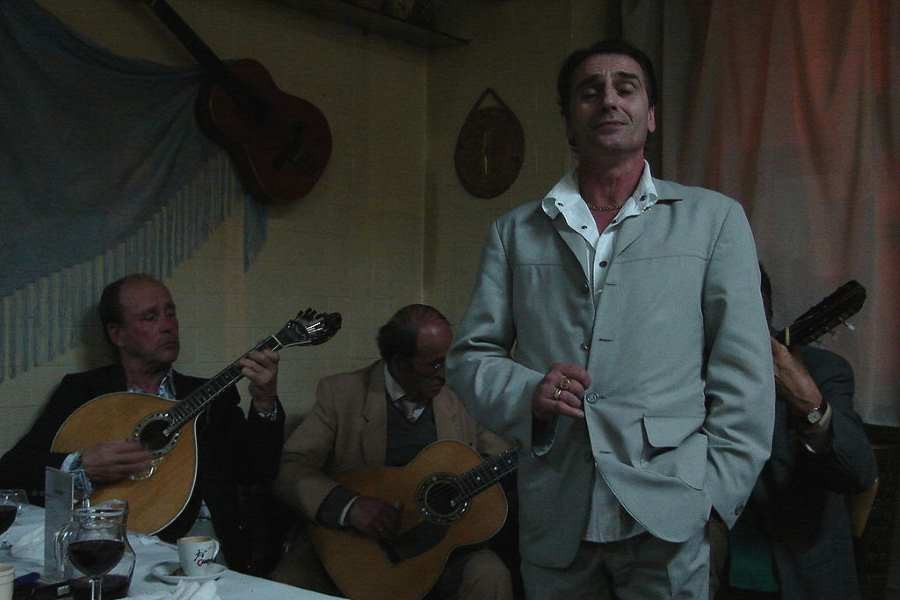If you think Fado Tradicional (traditional Fado) is Fado that was composed many years ago or if you think it’s the kind of Fado that Amalia sang, this article is for you, because you’re wrong…

The first thing to know is that here, the word “Tradicional” (meaning traditional) is not just an adjective. It is written “Fado Tradicional” and not “Fado tradicional” because there is a category of Fados with unique and well-defined characteristics that is called Fado Tradcional.
It’s a Fado style, but actually it’s the most authentic style and for some people that’s the real Fado.
To understand this status, watch this video (1:38) where the Fado singer shares a moment when she was invited to return to a Fado House, but next time she should sing “Fados”. That is, the real Fado – the Fado Tradicional.
But how is Fado Tradicional different from the others?
Before moving forward, I advise you to read my article about the styles that fado singers sing at their concerts,if you don’t already know them. Thus, you can better understand the specificity of this style.
For me, there are four features that make Fado Tradicional a unique style, not only among other fado styles, but also among all musical styles. And that’s what I’m going to write about in this article:
- The name of a Fado Tradicional refers to the music and not to the lyrics;
- Interpreting Fado Tradicional is to create;
- Fado Tradicional is a song without chorus;
- Fado Tradicional has its own language.
1. The name of Fado Tradicional refers to the song and not to the lyrics
Usually, the name of a song refers to a whole (song and lyrics). But in Fado Tradicional, the title is only for the musical part.
In this video, the singer announces the name of Fado – “the Fado Cravo” – and then the title of the poem – “Triste Sorte”.
Each fado singer can use the poem he wants to sing in every Fado Tradicional. The only thing you should consider is that each Fado requires a specific poem metric. There are fados for sextilhas, fados for courts, fados for decassyllables, etc. Check the Site of Zé da Viola de Fado to see the relationship between fados and metrics.
In the following video, you can hear an interpretation of the same fado (Fado Cravo), but with a different lyrics – “Maldição” (Curse).
Another example of Fado Cravo, but with the poem “Lágrimas do Céu” (Tears from Heaven):
2. Interpreting Fado Tradicional is creating
In the examples above, you certainly realized that, in addition to the poem, the song also had many differences, as if they were two different versions. This is because the fado singer, in addition to choosing the letter, should also seek to make unique interpretations. The same applies to guitarists.
Now notice these three interpretations of Fado Pedro Rodrigues:
Two of them are even interpreted with the same lyrics and by the same singer, but they look quite different. This is because when we play or sing Fado Tradicional we don’t want to follow a score.
In this style, a good performer (singer or guitarist) not only puts his personal character in music, but also improvises a lot, according to the emotion of the moment and the musical dialogue that is established between the musicians.
In addition, in Fado Tradicional it’s not usual to prepare a concrete final object, or to make rehearsals for this purpose. Each performance should be unique and felt.
3. Fado Tradicional is a song without chorus
One of the aspects that distinguishes this Fado from other styles is the fact that it has no chorus. There are a few exceptions, but they are rare.
4. Fado Tradicional has its own language
Each musical style has a specific harmonic and melodic construction. If someone creates a ballad using chords, melodies and Rock features, then it must be Rock, even if it is played with a classical guitar and a Portuguese guitar.
So to be considered Fado Tradicional, it is not enough to be a song without chorus, where musicians can improvise and have freedom to use a poem of choice of the singer.
It has to possess a characteristic sound. It has specific harmonic progressions, rhythms and melodic drawings.
I advise you to listen to Zé da Viola’s Youtube playlist that contains this Fados from A to Z. There are 180 distinct Fados, but you will realize that they always have a special color and a style of their own, different from other musical genres.
I also suggest you take advantage of this list to get to know Fados by their names and not by the name of the lyrics.
So you can use Youtube to understand the variety and richness that exists around each Fado (Tradicional). Just search for the name of a Fado Tradicional and you will find numerous interpretations of it.
Listen to live Fado Tradicional
Being this Fado a music of sharing and creation, I assure you that watching a live show it’s completely different than listening to recordings.
When you are close to a good fado singer, a Portuguese guitar and a classical guitar, the music has an indescribable intensity and emotions flow.
In Porto you can listen to our concert, which is the only one exclusively dedicated to Fado Tradicional. We do it, not because we are purists, but because we prefer this more artistic and less commercial style.
Now I challenge you to do our test to see if you really like Fado (Tradicional) or if you prefer the other styles 🙂